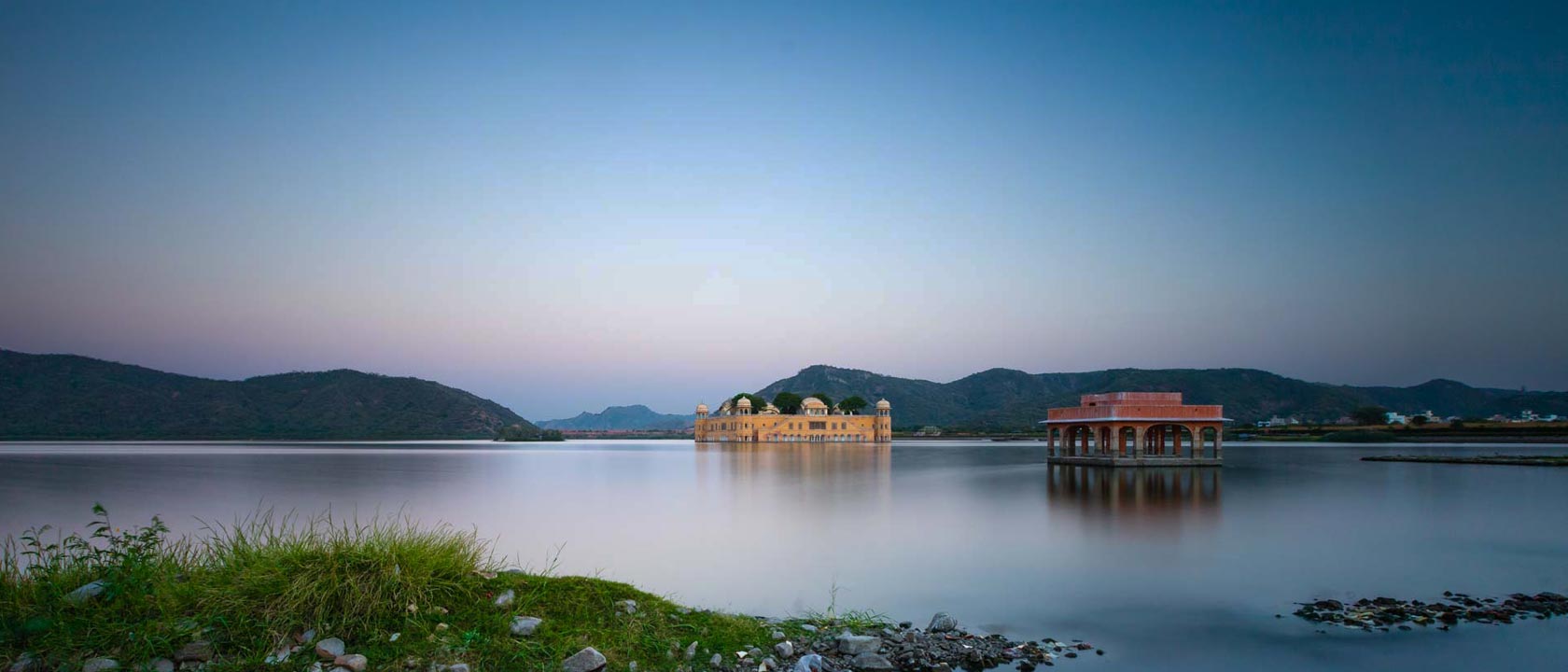
Planned by Vidyadhar Bhattacharya, Jaipur holds the distinction of being the first planned city of India. Renowned
globally for its coloured gems, the capital city of Rajasthan combines the allure of its ancient history with all the
advantages of a metropolis. The bustling modern city is one of the three corners of the golden triangle that includes
Delhi, Agra and Jaipur.
The story goes that in 1876, the Prince of Wales visited India on a tour. Since the colour pink was symbolic of
hospitality, Maharaja Ram Singh of Jaipur painted the entire city pink. The pink that colours the city makes for a
marvellous spectacle to behold. Jaipur rises up majestically against the backdrop of the forts Nahargarh, Jaigarh and
Garh Ganesh Temple.
Jaipur traces back its origins to 1727 when it was established by Jai Singh II, the Raja of Amber. He shifted his
capital from Amber to the new city because of the rapidly-growing population and an increasing water scarcity. Noted
architect Vidyadhar Bhattacharya used the established principles of Vastu Shastra to build the city.

The city of Jaipur was founded in 1727 by Jai Singh II, the Raja of Amer who ruled from 1699 to 1743. He planned to shift his capital from Amer, 11 kilometres (7 mi) from Jaipur to accommodate the growing population and increasing scarcity of water. Jai Singh consulted several books on architecture and architects while planning the layout of Jaipur. Under the architectural guidance of Vidyadhar Bhattacharya, Jaipur was planned based on the principles of Vastu shastra and Shilpa Shastra.[10] The construction of the city began in 1726 and took four years to complete the major roads, offices and palaces. The city was divided into nine blocks, two of which contained the state buildings and palaces, with the remaining seven allotted to the public. Huge ramparts were built, pierced by seven fortified gates.[7]
Jaipur is a standout amongst the most socially rich legacy urban areas in India. Established in the year 1727, the city is named after Maharaja Jai Singh II who was the primary organizer of this city. He was a Kachhwaha Rajput and ruled the region in the vicinity of 1699 and 1744.
During the rule of Sawai Ram Singh I, the city was painted pink to welcome the Prince of Wales, later Edward VII, in 1876.[11] Many of the avenues remained painted in pink, giving Jaipur a distinctive appearance and the epithet Pink city. In the 19th century, the city grew rapidly and by 1900 it had a population of 160,000. The wide boulevards were paved and its chief industries were the working of metals and marble, fostered by a school of art founded in 1868.[6] The city had three colleges, including a Sanskrit college (1865) and a girls' school (1867) opened during the reign of the Maharaja Ram Singh II.[13][14]
Large areas of the city including the airport were flooded in August 1981, resulting in the death of eight people and much damage to the city's Dravyavati River.[15] The floods were caused by
three days of cloud burst that produced more rain than the annual average.
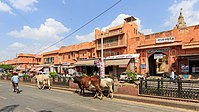
Jaipur has many cultural sites like Jawahar Kala Kendra formed by Architect Charles Correa and Ravindra Manch. Government Central Museum hosts several arts and
antiquities. There is a government museum at Hawa Mahal and an art gallery at Viratnagar. There are statues depicting Rajasthani culture around the city. Jaipur has
many traditional shops selling antiques and handicrafts. The prior rulers of Jaipur patronised a number of arts and crafts. They invited skilled artisans, artists
and craftsmen from India and abroad who settled in the city. Some of the crafts include bandhani, block printing, stone carving and sculpture, tarkashi, zari,
gota-patti, kinari and zardozi, silver jewellery, gems, kundan, meenakari and jewellery, Lakh ki Chudiya, miniature paintings, blue pottery, ivory carving, shellac
work and leather ware.
With a wonderful combination of ancient royal heritage and ultra-modern life method Jaipur displays a cool presentation of urban lifestyle.
Jaipur has its own performing arts. The Jaipur Gharana for Kathak is one of the three gharanas of the major north Indian classical dance form of Kathak. The Jaipur
Gharana of Kathak is known for its rapid intricate dance forms, vivacious body movements and subtle Abhinaya. The Ghoomar is a popular folk dance style. Tamasha
is an art form where Kathputli puppet dance is shown in play form. Major festivals celebrated in Jaipur include Elephant Festival, Gangaur, Makar Sankranti, Holi, Diwali, Vijayadashami,
Teej, Eid, Mahavir Jayanti and Christmas. Jaipur is also famous for the Jaipur Literature Festival, the world's largest free literature festival
in which country-wide authors, writers and literature lovers participate.
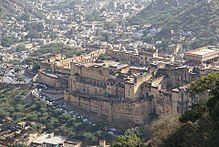
The city was planned according to Indian Vastu shastra by Vidyadhar Bhattacharya in 1727. There are three gates facing east, west, and north. The eastern gate is called Suraj pol (sun gate), the western gate is called Chand pol (moon gate) and the northern gate faces the ancestral capital of Amer.
The main language of Jaipur is Rajasthani. Dhundhari, Marwari, Hindi and English are also spoken in the city.
Jaipur has a hot semi-arid climate (BSh) under the Köppen climate classification. It receives over 625 millimetres (25 in) of rainfall during an average year but most rains occur in the monsoon months between June and September. Temperatures remain relatively high during summer from April to early July having average daily temperatures of around 30 °C (86 °F). During the monsoon there are frequent, heavy rains and thunderstorms, but flooding is not common. The winter months of November to February are mild and pleasant, with average temperatures ranging from 10–15 °C (50–59 °F) and with little or no humidity and cold waves lead to temperatures near freezing.
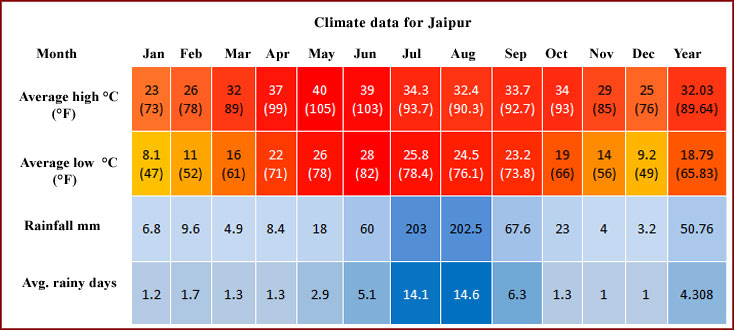
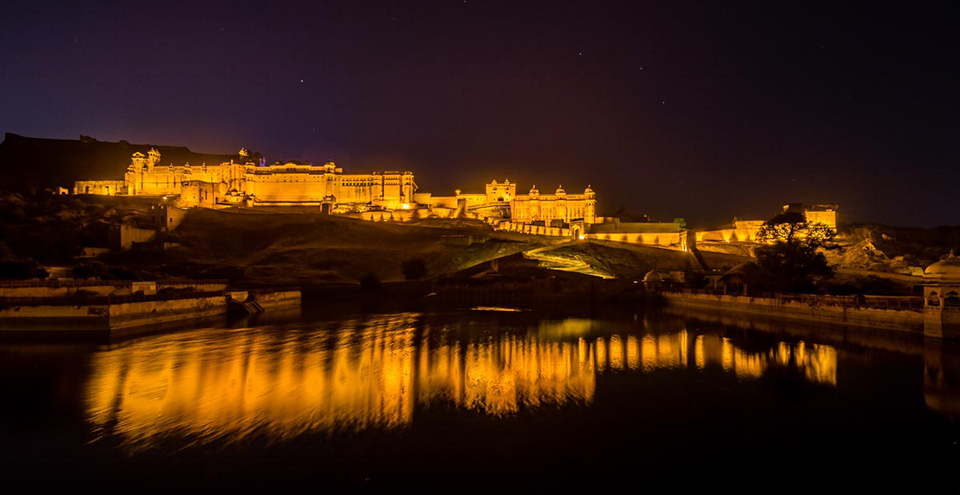
Amber (pronounced Amer) is at a distance of about 11 kilometres from Jaipur. Now a UNESCO World Heritage Site, it was the bastion of the Kachwahas of Amber, until the capital was moved to the plains, to what is today Jaipur. The palace, located in craggy hills, is a beautiful melange of Hindu and Mughal styles. Raja Man Singh I began construction in 1592 and the palace, which was built as a strong, safe haven against attacking enemies, was completed by Mirja Raja Jai Singh. The contrast between the harsh exterior and the inviting interior couldn’t be more surprising. Made entirely of red sandstone and white marble, visitors are left spellbound by the magnificence of the palace that utilises carvings, precious stones and mirrors. The splendour of the palace is enhanced by the breath-taking vista of the Maota Lake in front. The palace is nearly seven centuries old and has a legendary past. Originally a small structure that the Rajputs won from the Meena tribes, it was later transformed into the grand Amber Palace.
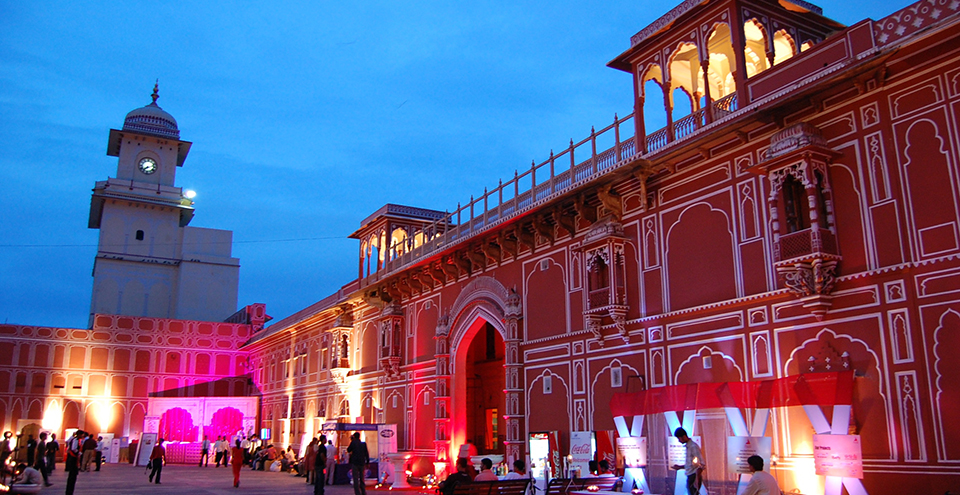
Located deep within the walled city, the City Palace Complex was conceived and built by Maharaja Sawai Jai Singh II, the founder of Jaipur. A beautiful fusion of Mughal and Rajput architecture, the palace is still home to the last ruling royal family which lives in a private section of the palace. Maharaja Sawai Jai Singh II is credited with building most of the structures, but it was expanded upon by later rulers as well. The City Palace Complex includes the Mubarak Mahal (the palace of reception) and the Maharani’s Palace (the palace of the queen). Mubarak Mahal now houses the Maharaja Sawai Man Singh II Museum and displays a vast and unique collection of royal costumes, delicate Pashmina (Kashmiri) shawls, Benaras silk saris, and other dresses with Sanganeri prints and folk embroidery. The clothes of Maharaja Sawai Madho Singh I are also on display. The Maharani's Palace, surprisingly, has an interesting display of very well-preserved Rajput weaponry, some dating back to the 15th century. Other than the arms, the palace is adorned with beautiful paintings on the ceiling that are well-maintained.
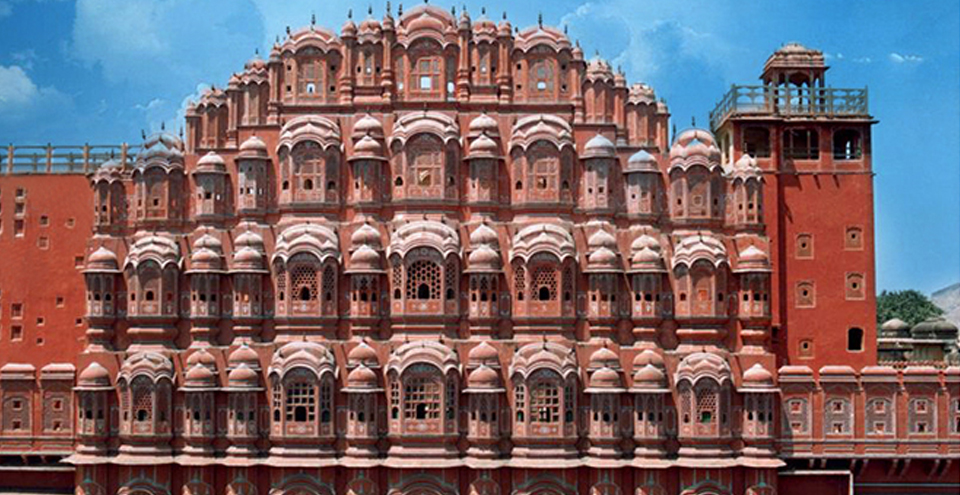
Hawa Mahal, literally the Palace of Winds, was built in 1799 by the poet king Sawai Pratap Singh as a summer retreat for him and his family. It also served as a place where the ladies of the royal household could observe everyday life without being seen themselves. This unique five-storey structure is a blend of Hindu and Islamic architecture, and the exterior, with its small latticed windows (called jharokhas), resembles the crown of Lord Krishna. The windows also serve as an air-conditioner of sorts, blowing cool air throughout the palace, making it the perfect retreat during summers. Built from pink sandstone, the Hawa Mahal is Jaipur’s iconic landmark and visitors can view its complete magnificence from outside, from across the road. However, it is also possible to climb right up to the top for a wonderful view from the windows. Today, the Mahal is maintained by the Archaeological Department of the Government of Rajasthan and also houses an archaeological museum in the courtyard.
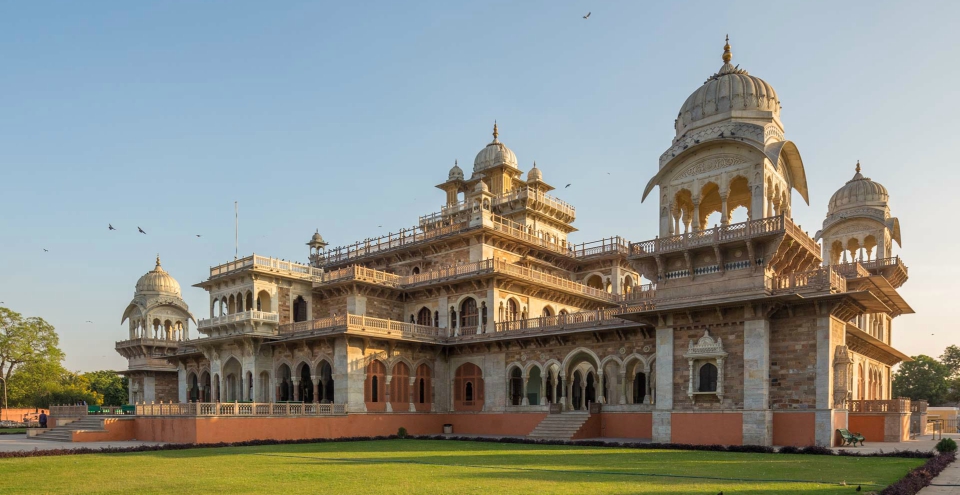
The building gets its name from The Victoria and Albert Museum in London, the inspiration for its design. The exquisitely built Albert Hall is housed in the centre of Ram Niwas Garden. Sir Swinton Jacob (who is also the mastermind behind many other palaces in Rajasthan) conceptualised and designed it using styles from the Indo-Sarcenic architecture and the Prince of Wales laid the foundation stone of the building in 1876. The museum displays a wide range of metal objects, wood crafts, carpets, stone and metal sculptures, arms and weapons, natural stones and ivory goods. It also houses a large collection of miniatures from Bundi, Kota, Kishangarh, Udaipur and Jaipur schools of art.
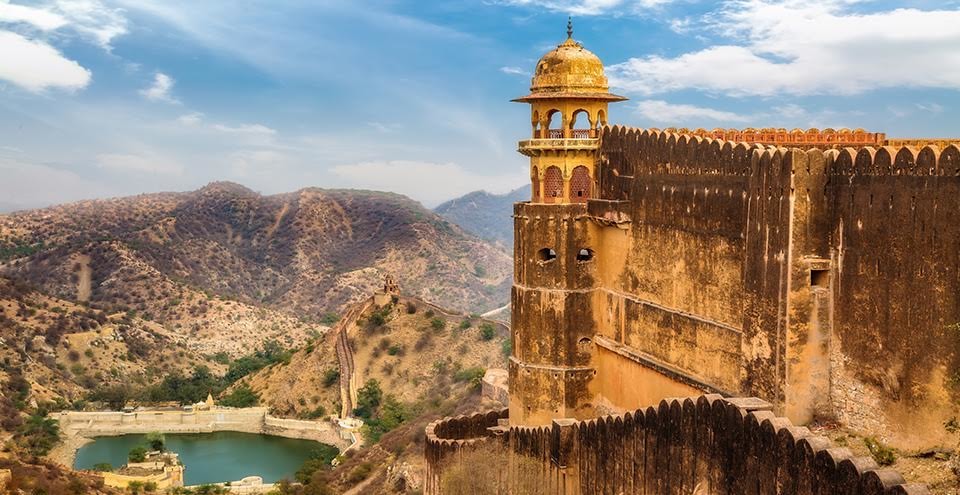
About 15 kilometres from Jaipur, Jaigarh Fort was built by Sawai Jai Singh II sometime in the early 18th century amidst the arid, rocky and thorn-scrub covered hills. Despite its ancient construction, it still retains most of its imposing citadel appearance. Visitors can see the world’s largest cannon – Jaiban, at the fort.

The Lakshmi-Narayan Temple, or the Birla Temple, as it is more popularly known as, is located at the base of Moti Dungari. Built on an elevated platform, this comparatively modern temple is built entirely of white marble and dominates the skyline of south Jaipur. The temple was commissioned and built by renowned Indian industrialists, the Birlas, in 1988. The temple is dedicated to Lord Vishnu, also called Narayan, and his companion, Lakshmi, the Goddess of wealth and good fortune. The temple is a work of art and has a marvellous display of exquisite carvings and sculptures covering many mythological themes. The eye is drawn to the images of Laxmi and Narayan, carved as they are, from one piece of marble. The top of the temple has three domes, each representing the three religions followed in India. This is designed to pay homage to secular India. The temple looks spectacular at night when it is lit up. Other than the main temple, the complex has a museum that exhibits the earlier belongings of the Birla family.
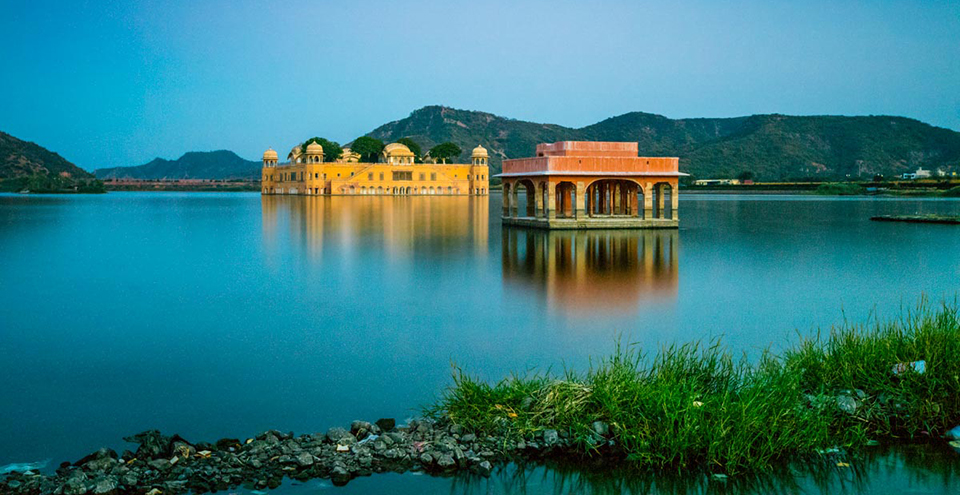
One of the most wonderful sights in Jaipur is the beautiful Jal Mahal or Lake Palace. The light, sand coloured stone walls and the deep blue of the water make for a wonderful contrast. The palace appears to float in the centre of Man Sagar Lake, where its magnificent exteriors can be enjoyed by tourists.

Just off the Jaipur-Amber road is Gaitore, where the former Maharajas of Jaipur are entombed. The chhatris (cenotaphs), made of white marble display the distinctive Rajput style of architecture. The open pavilions with ornate domes are supported by delicately sculpted pillars. The crematorium is located in the middle of yellow sandstone hills. The décor and extravagance of a particular chattri is meant to reflect the stature and prowess of the ruler it contains. The most graceful and beautiful chattri at Gaitor is that of Maharaja Jai Singh with 20 carved pillars. Tourists are especially drawn towards it because of its intricate carvings.
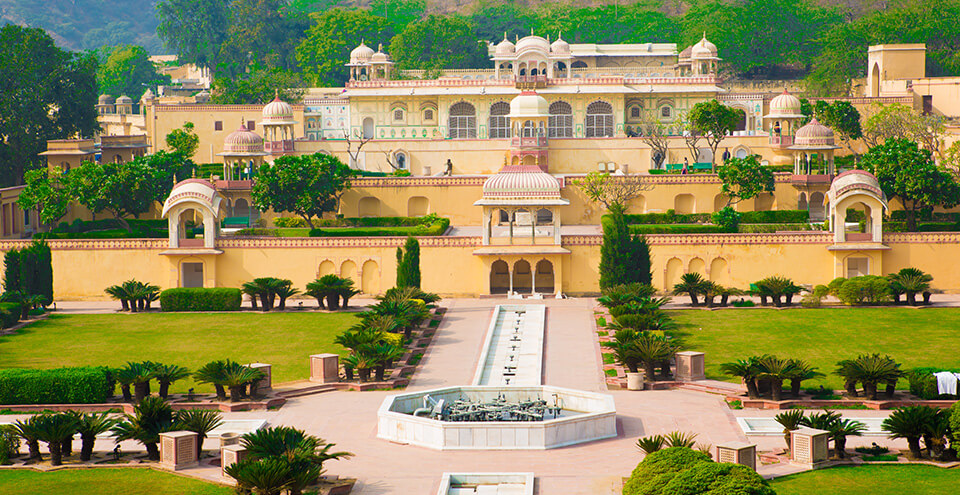
Sisodia Rani Palace and Garden is located 8 kilometres from Jaipur on the Agra road. Laid out in Mughal style, it is painted with the legends of Radha and Krishna. The garden is multi-tiered and has fountains, water courses and painted pavilions. Maharaja Sawai Jai Singh II built it for his Sisodia queen.
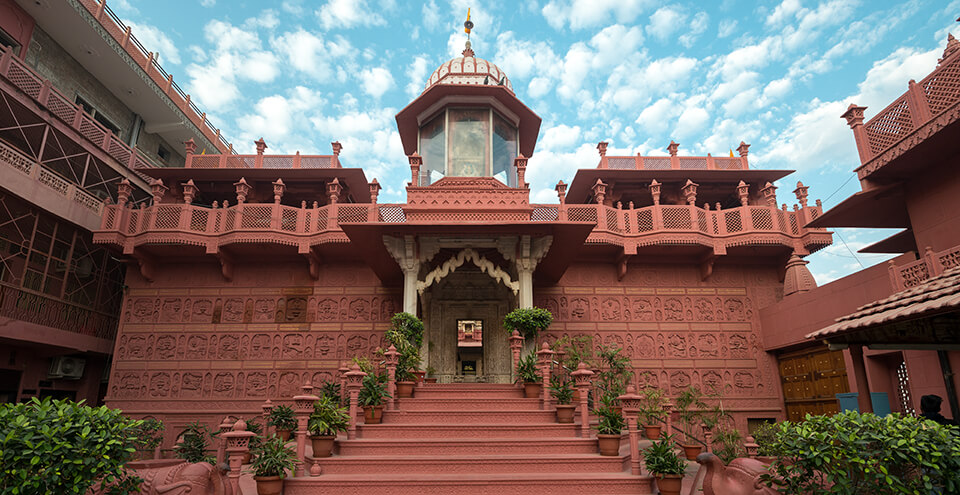
The ancient Digamber Jain temple at Jaipur is in Sanganer, 14 km from the city. The principal idol in the Sanghiji Temple is of Lord Adinath in the Padmasan (lotus position) posture. The temple is made of red stone and has attractive carvings. The seven-storied temple has sky-high 'shikharas' (spires) and its inner sanctum is a stone shrine with eight sky-high shikharas.
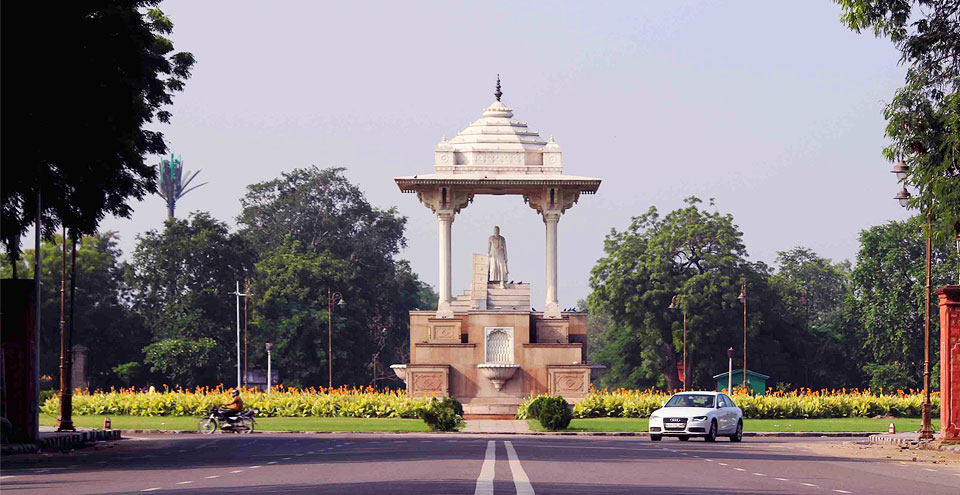
A life-size white marble statue of Sawai Jai Singh II, the founder of Jaipur, stands tall in the middle of a circle in the C-Scheme area. Erected in his honour, the statue pays homage to the founder of Jaipur.
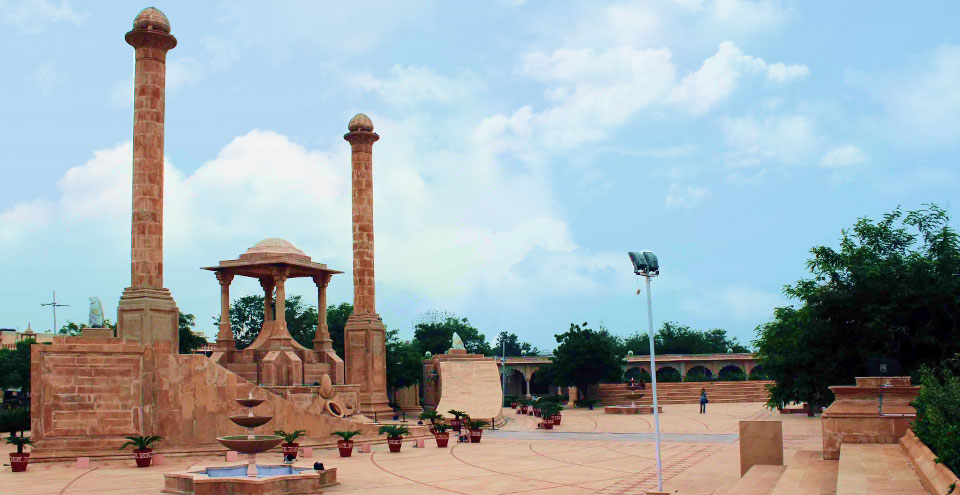
The Amar Jawan Jyoti, or the ‘flame of the immortal soldiers’, is a memorial dedicated to the martyrs of Rajasthan. This memorial is situated near Jaipur’s Vidhan Sabha Bhawan (Legislative Assembly).The key attraction of the Amar Jawan Jyoti is that the torches at the four corners of the structure are always burning. In evenings, this formidable structure is attractively lit up in vivid colours. The brilliant lighting effects make this a picturesque spot a favourite with tourists.

One of the most-visited temples in the city of Jaipur, the Akshardham Temple depicts real architectural wonders. Surrounded by lush green gardens and charming fountains, the Akshardham Temple has unique architectural features, including the walls which are covered with a number of carvings and sculptures that are beautiful to look at. This helps create an amazing atmosphere of peace and serenity, attracting not just thousands of devotees, but also a number of tourists throughout the year. The temple is located in Vaishali Nagar in Jaipur, and is devoted to the Hindu God, Narayan,whose beautiful statue is covered in silver and gold ornaments. The temple very religiously reflects the rich culture, unique heritage, and royal history of Rajasthan, enrapturing its visitors with its beautiful architecture, paintings, and mantras. It also offers visitors beautiful views and a chance to discover a lot more about the religion.
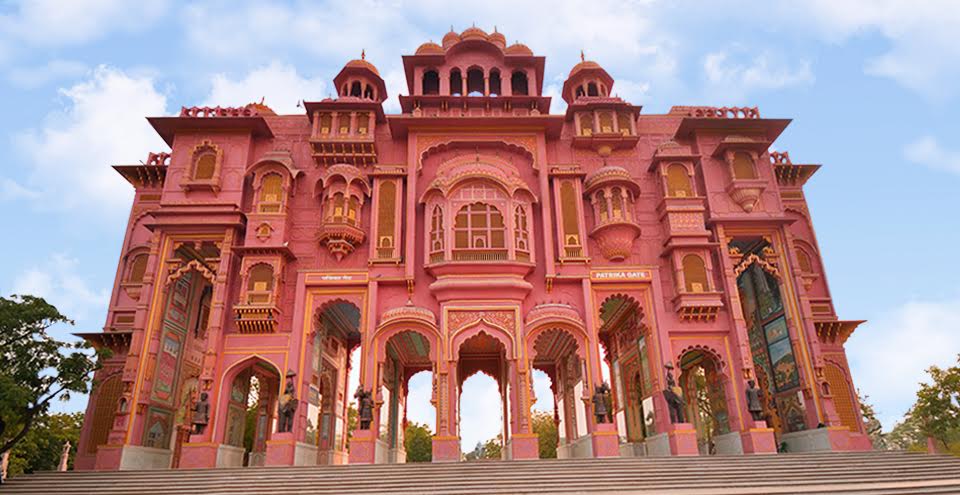
Located near the Jawaharlal Nehru Marg in the Pink City, Jaipur, the Jawahar Circle is a unique destination for all kinds of visitors. Honored as the largest circular park in Asia, Jawahar Circle is encompassed by a rose garden and offers a number of concentric jogging tracks, benches, and lush greenery.While the beautifully landscaped plantations and green areas of the park are enough to leave a visitor awed, the main attraction of the park has definitely got to be the Musical Fountain. The fountain creates spectacular shows with over 270 types of effects and over 300 colorful lights. Sometimes, the height of the water of the musical fountain reaches up to 25 feet as well. While Jawahar Circle is a delight to be in to spend a day relaxing amidst nature, it gets even better in the evening hours. Artfully lit up, the musical fountain show is a 30-minute treat that begins at 7 in the evening, and is something that simply cannot be missed.

The nostalgia of the Kiran Café at Ram Niwas Bagh was hard to let go off. But now, the show is back on the road, with a new name – ‘Masala Chowk’, a place where you get to celebrate and indulge in the tastes of the street food of Jaipur.The place has become a rather popular hangout spot among visitors to the city. One can taste the best street foods of Jaipur at Masala Chowk and sit around enjoying the local flavours of the city. Masala Chowk is home to a total of 21 street food stalls, and charges an entry fee of Rs 10 to get in. The best time to visit is in the evening; that is when you also get the chance to mingle with the locals of the place.
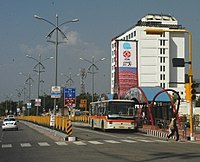
Jaipur is located on National Highway No.8 connecting Delhi and Mumbai. National Highway 12 links Jaipur with Kota and National Highway 11 links Bikaner with Agra passing through Jaipur. RSRTC operates bus service to major cities in Rajasthan, New Delhi, Uttar Pradesh, Haryana, Madhya Pradesh, Maharashtra, Punjab and Gujarat.
City buses are operated by Jaipur City Transport Services Limited (JCTSL) of RSRTC.The service operates more than 400 regular and low-floor buses. Major bus depots
are located at Vaishali Nagar, Vidyadhar Nagar and Sanganer.
Jaipur BRTS was approved by the government in August 2006. Jaipur BRTS is managed by JCSTL, a special purpose vehicle formed by Jaipur Development Authority and
Jaipur Nagar Nigam. In Phase I, two corridors have been proposed: a "North-South Corridor" from Sikar Road to Tonk Road and an "East-West Corridor" from Ajmer Road
to Delhi Road. A section of the North-South Corridor from bypass near Harmada to Pani Pech became operational in 2010

Jaipur is the headquarters of North Western Zone of Indian Railways.Jaipur Junction railway station is well connected to all major cities of India like Delhi, Mumbai, Hyderabad, Kolkata, Chennai, Bengaluru, In dore, Lucknow and Ahmedabad. Other stations include Gandhinagar, Durgapura, Jagatpura, Ninad Benad and Sanganer.
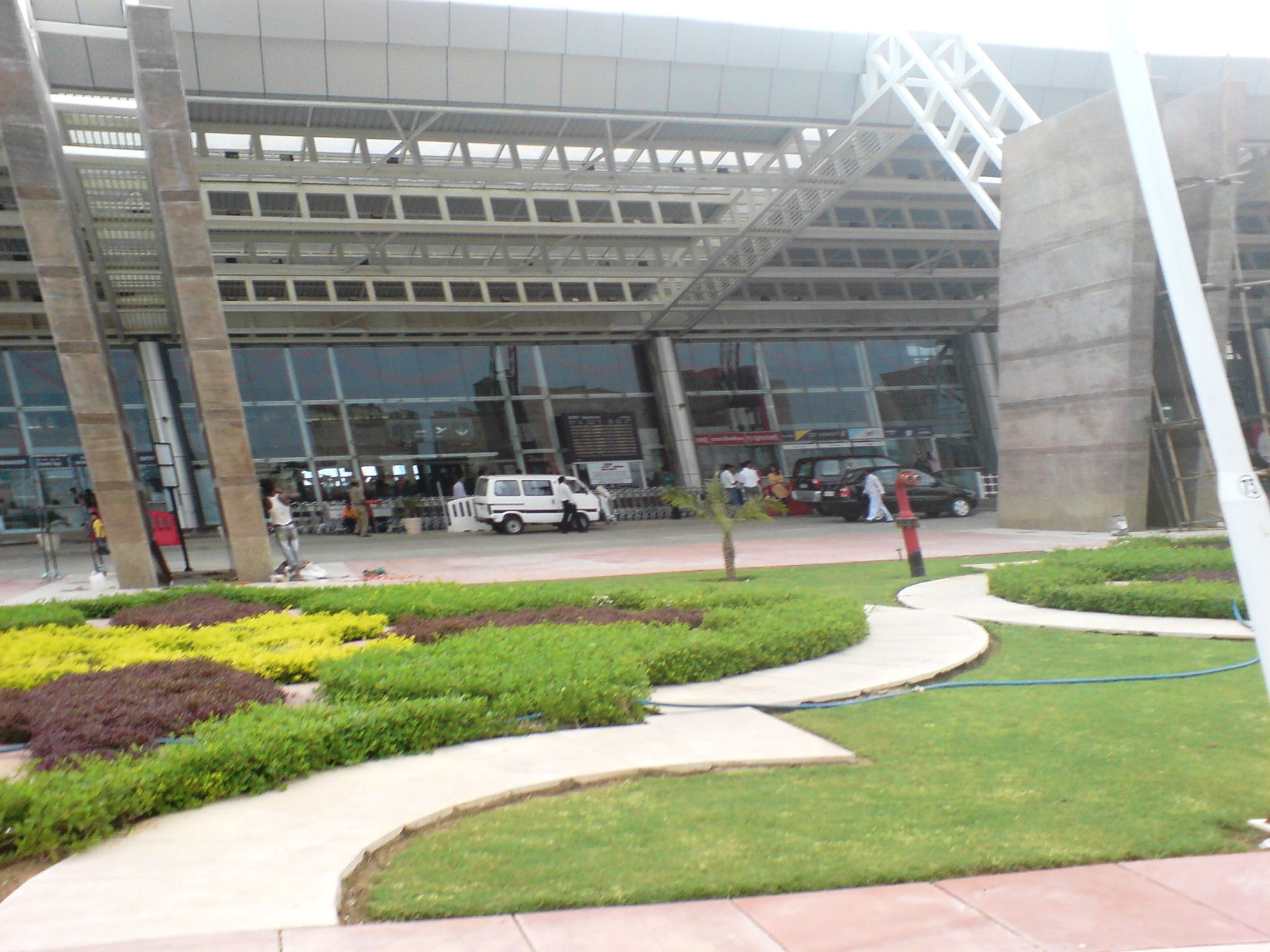
Jaipur International Airport is in Sanganer, 10 km (6 miles) from the centre. The airport handled 363,899 international and 2,540,451 domestic passengers in 2015–2016.[68] Jaipur Airport also provides air cargo services. During winter, sometimes flights towards Indira Gandhi International Airport are diverted to Jaipur Airport due to heavy fog in Delhi.[69] The airport operates regular domestic services to major Indian cities including Ahmedabad, Bengaluru, Chandigarh, Chennai, Delhi, Guwahati, Hyderabad, Indore, Kolkata, Lucknow, Mumbai, Pune, Surat, U daipur and Varanasi. International destinations served include Dubai, Muscat, Bangkok, Sharjah and Kuala Lump.
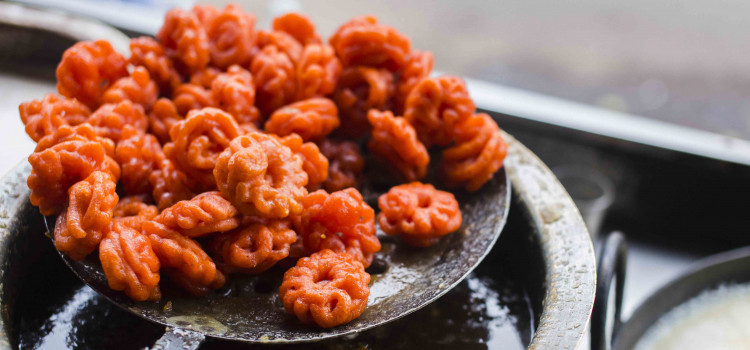
A trip to Jaipur (or anywhere in Rajasthan) is not complete without digging into authentic Rajasthani food. Whether you’re craving dal bati churma, laal maas, kachoris or ghevar, Jaipur is foodie’s paradise. If you’re new to this cuisine you can’t return without trying dal bati churma, the flagship dish of Rajasthani cuisine. Bati is a baked ball made from flour which is then covered in ghee and eaten with the dal. Churma is a flaky sweet dish made from flour that goes with the dish.